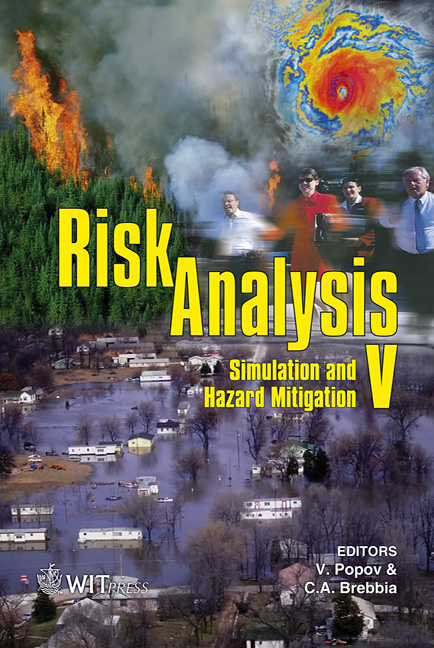Introduction Of An Approach To Disaster Mitigation Using Crisis-adaptive Information Sharing Platform And Technology
Price
Free (open access)
Transaction
Volume
91
Pages
7
Published
2006
Size
451 kb
Paper DOI
10.2495/RISK060121
Copyright
WIT Press
Author(s)
T. Suzuki & Y. Goto
Abstract
It is well known that a lack of information sharing led to the enlargement of earthquake damage in the Hyogo-ken Nambu earthquake of 1995 [1]. The Niigata-ken Chuetsu (the central Niigata prefecture) earthquake of October 23, 2004 and the Niigata and Fukushima heavy rainfall of October 2004, however, demonstrated that the lessons from past disasters had not been learnt, although the spread of the internet helped both collection and transmission of disaster information in various fields. For the purpose of mitigating damages due to disasters, research on disaster mitigation using crisis-adaptive information sharing technology was commenced in 2004, as a joint project of 12 different organizations consisting of a government office and a government agency, national research institutes, universities, and private companies. The National Research Institute for Earth Science and Disaster Prevention (NIED) is in charge of leading the project, the development of disaster mitigating information sharing (DMIS) system, which plays an important role in the DMIS platform, and the investigation into information sharing in actual disaster mitigation activities conducted in local governments. This paper introduces the outline of the project first, including the concept of the DMIS platform, which will be developed. Then, a few approaches conducted in the project last year by NIED are stated, including recent events of disaster in Japan. Keywords: information sharing, platform, disaster mitigation, earthquake, heavy rainfall, joint project.
Keywords
information sharing, platform, disaster mitigation, earthquake, heavy rainfall, joint project.





